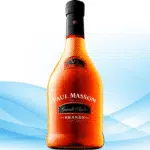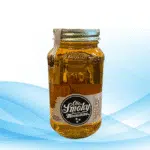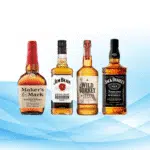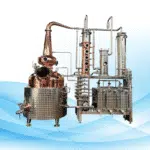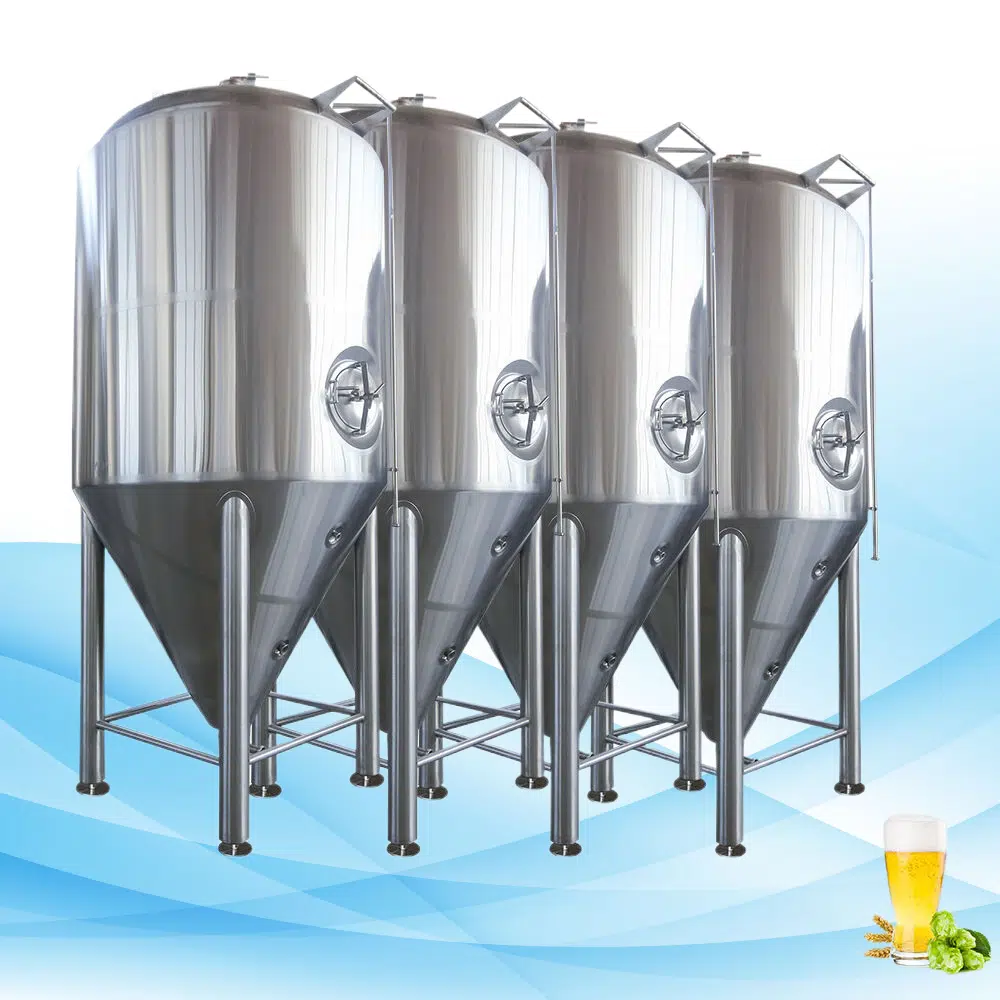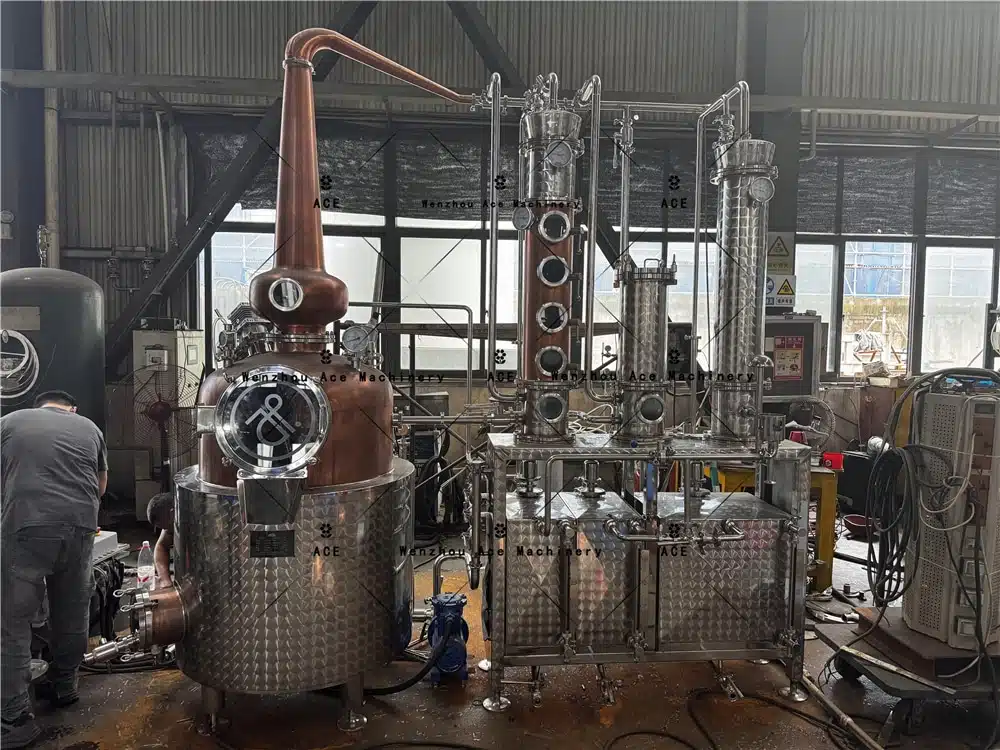From way back in the day to all the cool craft breweries now, the way we make beer has changed a lot. Yet, the basic process remains the same.
We will decompose the whole process from scratch to the end and show you the science behind this impressive drink.
Even an experienced drinker or curious novice, this guide is perfect for you.
The following is the content you should know when brewing beer at home.
Important ingredients, basic equipment, and why hygiene is so important?
From fermentation to bottle, we guide each stage of brewing. Each step will be described in more detail, allowing you to know exactly how to achieve it.
I also showed changes in ginger beer and butter beer.
We advise on how to make your homemade beer taste better.
Understanding Beer Brewing

Before diving in to brewing beer, let’s develop some basic knowledge. Knowing more will make brewing so much more enjoyable as you appreciate its science and technology behind it all.
Beer is a fermented beverage made of four main components: water, malted cereals (usually barley), yeast and malt extract. Each element contributes significantly to its taste, smell and alcohol content.
Brewing involves multiple steps that must be carefully undertaken for it to succeed: purification, boiling, fermenting and bottling. In order to ensure optimal infusion results, special care must be given at every step.
Brewing beer involves much more than simply following a recipe; you must also understand why each step was undertaken and experiment to craft something truly original that’s simple for anyone to understand.
Essential Equipment for Brewing at Home
To start brewing beer at home, you’ll need some basic equipment. The following list of main contents:
- A large pot (for boiling the ingredients)
- A fermenter (where the beer will ferment)
- An airlock (to allow gases to escape during fermentation)
- A thermometer (to monitor temperatures)
- A hydrometer (to measure the beer’s specific gravity)
- A siphon (for transferring the beer)
- Bottles or kegs (for storing the finished beer)
- A bottle capper (if using bottles)
- Sanitizing solution (to clean all equipment)
While this may seem like a lot, most home brewing stores offer starter kits that include everything you need. As experience grows, brewery technology can be improved outside the investment.
Preparing to Brew: Sanitation and Ingredients
Before you start brewing, it’s important to prepare your workspace and ingredients. Before beginning to brew, it’s essential that both your workspace and ingredients are prepared. This involves cleaning and disinfecting equipment as well as collecting ingredients.
The Importance of Sanitation
Sanitation is a crucial part of the brewing process. Any bacteria or wild yeast present on your equipment can contaminate your beer. This can lead to off-flavors or even spoilage.
To avoid this, clean all your equipment thoroughly before and after each use. Then, sanitize everything that will come into contact with the beer after the boil. This includes the fermenter, airlock, siphon, and bottles or kegs.
Ingredients Overview: Water, Malt, Hops, and Yeast
Now, let’s take a closer look at the four main ingredients of beer: water, soda water, honey, yeast. Each beer will help you taste, flavor, color and alcohol content.
Water makes up about 90-95% of beer. Minerals in water affect the taste of beer and the efficiency of brewing processes.
Malt is the source of the sugars that yeast will ferment into alcohol. It also contributes to the beer’s color and flavor. The type of malt you choose can greatly influence the style of beer you’re making.
Here are some common types of malt:
- Pale malt: Provides a light color and a neutral, malty flavor.
- Pilsner malt: Gives a light color but more flavor than pale malt.
- Vienna and Munich malts: These add a golden to amber color and a toasty or biscuity flavor.
- Crystal or caramel malts: Contribute sweetness and color ranging from light amber to dark brown.
- Roasted malts: Used in small amounts to add a dark color and flavors like coffee or chocolate.
Hops add bitterness to balance the sweetness of the malt.
Also provides flavor and flavor. There are many varieties of potted pots and each has its own taste.
Yeast is a microorganism that consumes sugar from wheat and produces alcohol, carbon dioxide and aroma compounds. Yeast strains you choose to have a significant effect on the taste and alcohol content of beer.
Knowing what ingredients to use and how they work together is the secret to making a really great beer. In the next part, we’ll go through each step of the brewing process together.
The Step-by-Step Beer Making Process
Now, let us know the steps to acquire basic knowledge and brew beer.This process can be broken down into six main stages: mashing, sparging, boiling, cooling, fermenting, and bottling.
Mashing: Converting Starches to Sugars
The first step in the brewing process is mashing. This is where the malted grains are soaked in hot water to extract their sugars.
The heat activates enzymes in the malt that convert the grain’s starches into sugars. These sugars will later be fermented by the yeast to produce alcohol.
The mashing process usually takes about an hour. During this time, the mixture of grains and water, known as the mash, is stirred occasionally to ensure even heating.
After mashing, the grains are separated from the liquid. The liquid, now called wort, will be boiled and then fermented to become beer.
Sparging: Rinsing the Grains
The removal is crucial for squeezing out as much sugar as we can from the grains.
Hot water is slowly poured over the grains, and the liquid is collected. This liquid is also called the word, containing sugar, fermented, and alcohol.
The goal of sparging is to rinse all the sugars off the grains without extracting any unwanted flavors.
Boiling the Wort and Adding Hops
Next, the wort is boiled and hops are added. Folkcool has several purposes. It sterilizes the wort, halts enzyme activity from the mash, and evaporates off unwanted flavors.
Chimera is added at different stages of boiling. These extra effects affect the taste, taste and flavor of beer.
Here’s a general guide to hop additions:
- Bittering hops: Added at the start of the boil. These hops are boiled for a long time (usually 60 minutes), which extracts their bittering compounds but not much flavor or aroma.
- Flavor hops: Added midway through the boil. These hops are boiled for a shorter time (usually 15-30 minutes), which allows some of their flavor compounds to survive.
- Aroma hops: Added near the end of the boil or after the boil has finished. These hops are not boiled long enough to extract much bitterness, but their flavor and aroma compounds remain.
Cooling and Transferring the Wort
After boiling, the wort needs to be cooled quickly. This is very important to prevent the growth of bacteria that could destroy beer.
The cooled wort is then transferred to a fermenter. This is usually a glass or plastic container where the beer will undergo fermentation.
Before transferring, the wort is often strained to remove any solid particles. This helps provide clear clean beer.
Fermentation: The Magic of Yeast
Now it’s time for the yeast to do its work. The yeast is added, or “pitched,” into the cooled wort.
The yeast eats up the sugars in the beer and makes alcohol, carbon dioxide, and all the flavors we love. That’s what we call fermentation.
Fermentation usually takes one to two weeks. It is important to keep farmers in a dark place in the shade.
The beer is ready for the next stage when the yeast has consumed all the available sugar and the beer has stopped bubbling.
Bottling and Carbonation
The final step in the brewing process is bottling. The beer is transferred from the fermenter into bottles or kegs.
Before bottling, a small amount of sugar is often added to the beer. This triggers a secondary fermentation in the bottle, which carbonates the beer.
The bottles are then capped and left to condition for a few weeks. This allows the flavors to mature and the carbonation to develop.
If you chill, you can drink beer. Enjoy house beer!
The next section introduces a selection of special beers including draft beer and beer oil.
Special Beer Variations
While the process we’ve outlined above is for a basic beer, there are countless variations you can try. Two popular ones are ginger beer and butter beer.
This beer has unique flavor and ingredients, and is different from traditional beer. Let’s see how each is accomplished.
How to Make Ginger Beer
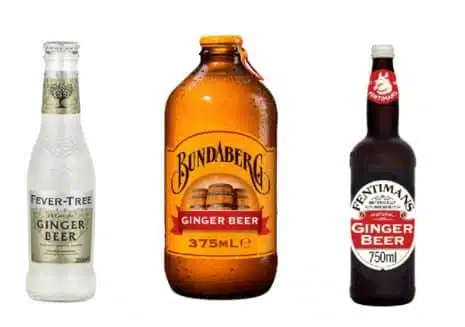
Beer is fresh, fresh drink and can be made without alcohol or alcohol. It is famous for its strong ginger flavor and soft dough.
Here’s a simple recipe for homemade ginger beer:
- Peel and grate a large piece of fresh ginger.
- Boil the ginger in water for about 20 minutes.
- Strain the liquid and add sugar, stirring until it’s dissolved.
- Once the mixture has cooled, add lemon juice and yeast.
- The mixture is transferred to the fermenter and kept stationary for several days.
- Drink one bottle of beer and drink some carbonates.
Remember that the longer the time to allow raw beer yeast, the higher the flavor and the higher the alcohol content.
Crafting a Magical Butter Beer
Butter beer is a sweet, creamy drink made famous by the Harry Potter series. The book version is alcoholic beverages, but most real recipes are non alcoholic beverages and are perfect for kids and adults.

Here’s a simple recipe for homemade butter beer:
- Combine cream soda and butterscotch syrup in a glass.
- Mix heavy cream, sugar and vanilla extract together in one separate cup and mix until soft peek.
- Spoon the whipped cream on top of the soda mixture.
- For an extra touch of magic, add a sprinkle of edible gold dust.
This is a fast and effortless beer prescription, this will surely be a hot topic for the next Harry Potter party theme.
In the next part, Tom’s gonna give you some tips on how to make your home-brewed beer taste even better.
Enhancing Your Homebrew: Tips for Better Taste
If you acquire the basic knowledge of home brewing, you can start various ways to improve the taste of beer.
Tons of stuff can affect how beer tastes, like the water you use or even how you sip it. Let us look at a few of these and try to understand why.
Adjusting Water Profiles and Yeast Strains
The water you use in your beer can have a significant impact on its taste.
Because it brings a different taste to beer by water, it is worth trying different water sources.
The kind of yeast you use also changes how your beer tastes. Different yeasts give different flavors, so it’s worth trying out a few and seeing which ones you prefer.
Remember that the key to beer is balance.You want all the flavors to work together harmoniously, without any one element overpowering the others.
The Role of Temperature and Aging in Flavor Development
The temperature at which you ferment your beer can also have a big impact on its flavor. Different yeast types work best at different temps, so to keep your fermentation space at the right temperature is the key.
Aging your beer can also enhance its flavor. As beer ages, the flavors can develop and become more complex.
Not all beers get better with age, so it’s worth checking first before you decide to let your beer sit.
Later, we’ll answer some common questions about homebrewing and give you some tipsto help you if you get stuck.
Common Questions and Troubleshooting
Homemade beer is a beneficial hobby, but it can also be a complex process with many variables.
It is normal to have problems and encounter problems along the way. In this section, we’re going to talk about some of the most common problems and give you some ideas on how to fix them.
FAQ: From Legalities to Pairing with Food
One common problem is family legitimacy. In many countries, home liquor is legal, but there may be restrictions on whether or not you can sell brewed quantities and beer. Check local law before you start.
Another problem is combination of diet and beer. Like wine, it is good for beer products. Common rules are to compare beer strength and food strength.
Some people want to know whether they can make beer using tap water. Although this is possible, the quality and taste of tap water affects the final product. It is usually recommended to use filter or PET bottle water.
Finally, many people asked the beer beer’s expiration date. This depends on the type and storage method of beer, but usually homemade beer lasts several months to one year.
Troubleshooting Common Homebrewing Problems
If you’re having trouble with your homebrew, don’t worry. Many issues are common and can be easily fixed.
For example, if your beer has a sour or off taste, it could be due to contamination. Make sure you’re sanitizing all your equipment properly.
If your beer isn’t carbonating, it could be that the yeast didn’t have enough sugar to eat. Try adding a little more priming sugar next time.
If the beer is too cloudy, there may be many factors related to the type of grain used, the boiling process and the fermentation temperature. Use these variables to see if more clear beer is available.
Remember, every brewer encounters problems at some point. The most important thing is to continue learning and experimenting. Beer is fun!
Conclusion: The Joy of Homebrewing
Brewing your own beer is a journey of discovery. It combines science and art and has patience and great creativity.
All the gifts you purchased are learning new things, try perfumes, and share your creative opportunities with friends and family.
So, whether you’re a seasoned brewer or just starting out, embrace the process. Have fun making your own creations! At the Bureau, this is the real fun of the family.
Glossary of Brewing Terms
To help you navigate the world of homebrewing, here’s a quick glossary of common terms you’ll encounter:
- Malt: Barley that’s been soaked, germinated, and dried,which provides the sugars needed for fermentation.
- Hops: Flowers that add bitterness and aroma to beer,acting as a natural preservative.
- Yeast: Microorganisms that consume the sugars from malt and produce alcohol and carbon dioxide.
- Wort: The sweet liquid extracted from malted barley. It’s boiled with hops and then fermented to make beer.
- Mashing: The process of steeping malt in hot water to extract sugars.
- Sparging: Rinsing the grains after mashing to extract remaining sugars.
- Fermentation: The process where yeast consumes sugars and produces alcohol and carbon dioxide.
- Bottling: The process of transferring beer into bottles for carbonation and storage.
- Carbonation: The process where yeast consumes a small amount of added sugar to produce carbon dioxide, giving the beer its fizz.
- Conditioning: The process of aging beer to improve its flavor.

